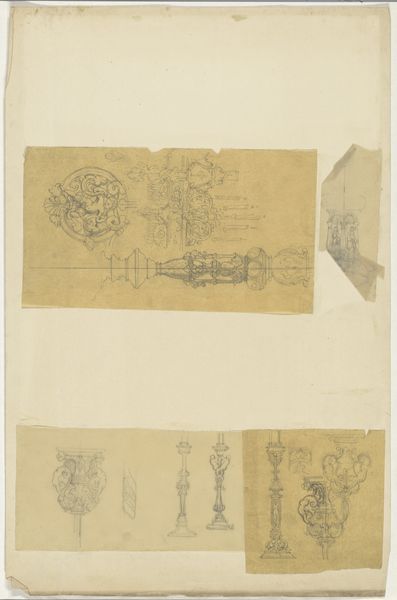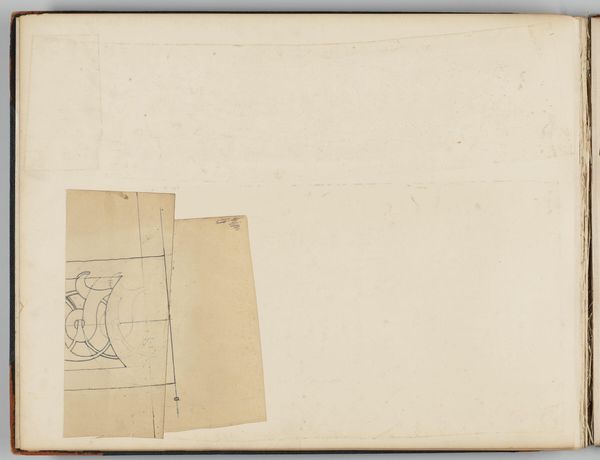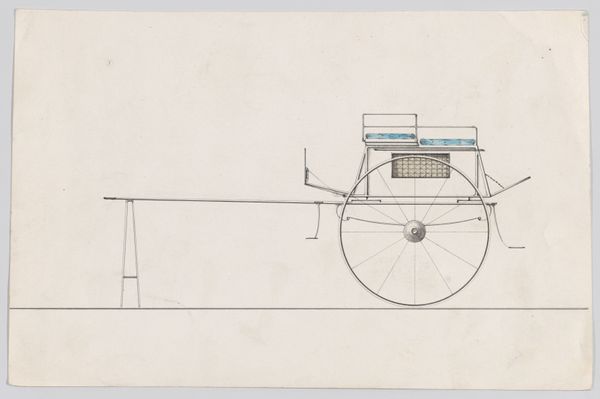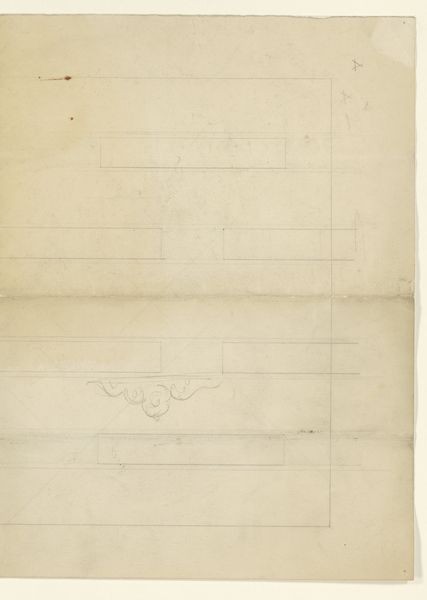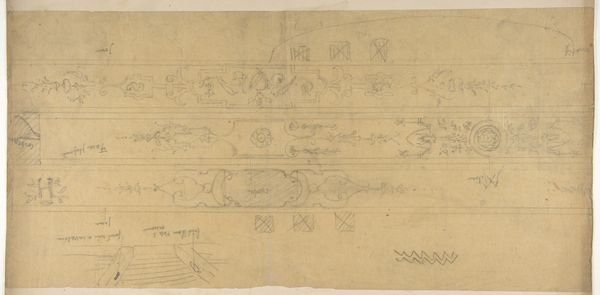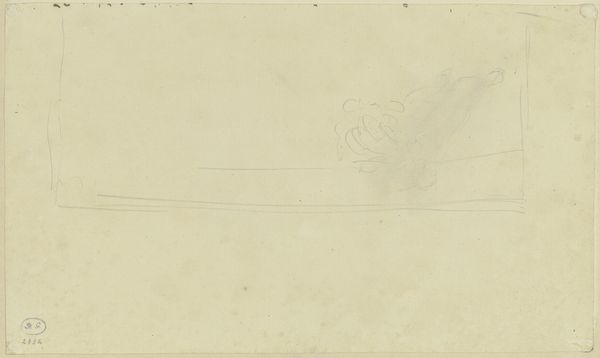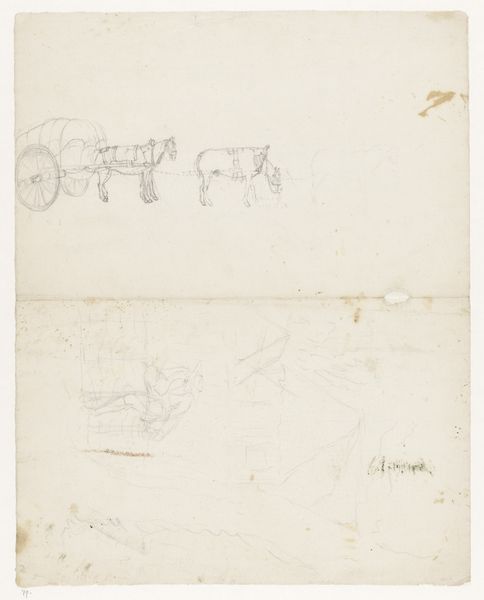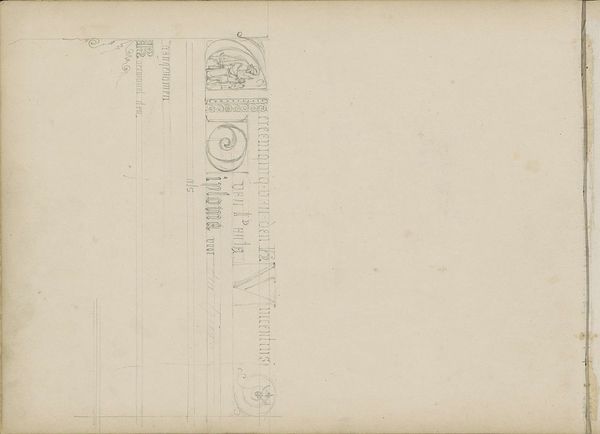
drawing, paper, pencil
#
drawing
#
neoclacissism
#
water colours
#
paper
#
pencil
#
watercolor
Dimensions: height 314 mm, width 500 mm
Copyright: Rijks Museum: Open Domain
Editor: We're looking at "Twee coupes en twee zoutvaten," or "Two Bowls and Two Salt Cellars," a drawing from between 1830 and 1850 by Firma Feuchère. It's done with pencil and watercolor on paper, and right away, I'm struck by the delicate details of what appears to be neoclassical design. What draws your eye to this piece? Curator: Oh, that's an intriguing question! My eyes can't help but first fall for its fragility and, at the same time, that confidence of the pencil! I like to imagine an artist completely at ease, letting their creativity flow without restraint, the ripped edges of the paper speaking to a life well lived, almost like the tears of time adding to the overall history. Did the artist decide what went on the paper, or the paper itself with its character, its tears? This all feels terribly precious to me. Does it spark anything in your soul, any reflections? Editor: Absolutely! Thinking about the artist making those design choices…they must have had such a strong understanding of form to represent it this way. Are these common design elements of neoclassicism? Curator: Indeed! You are totally right! Look at those swirling decorative motifs, the symmetry – it's all so very calculated to create something idealised. Yet, this drawing captures more than just a style. I mean, this isn’t only neoclassical design on paper, is it? What else do you find? Editor: I hadn't really considered it, but there's almost a modern feel to the minimalist presentation, especially because the drawing itself takes up very little space of the complete page. Curator: Exactly. Maybe it shows me the conversation between the intention and serendipity, perhaps! The way these seemingly simple items, bowls and salt cellars no less, bridge different eras, tells a more complex story about aesthetics, function, and survival...What do you think? Editor: It's fascinating to see how a seemingly straightforward sketch can hold so much history and potential meaning. Thanks for your insight! Curator: My absolute pleasure. Art is just so exciting.
Comments
No comments
Be the first to comment and join the conversation on the ultimate creative platform.



